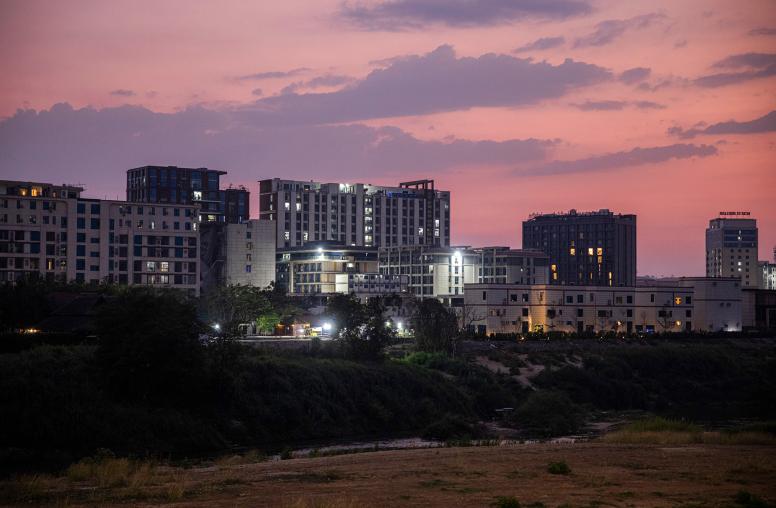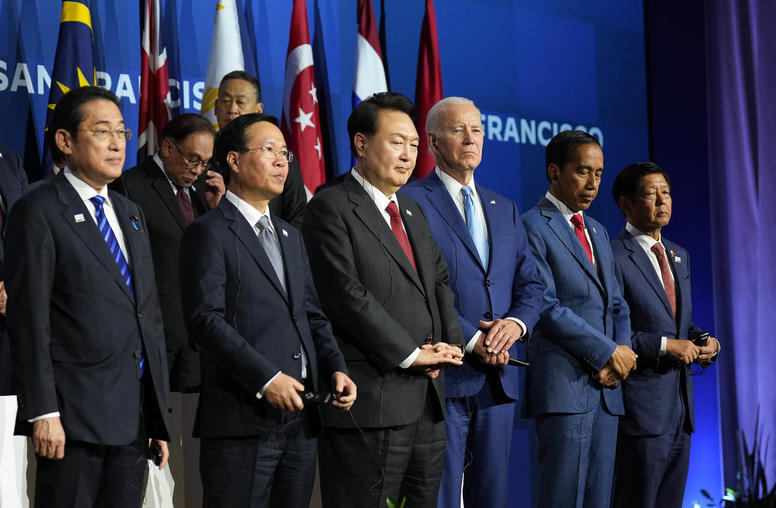Thailand’s Political Protests Wade into Unprecedented Territory
As activists and protesters openly criticize Thailand’s monarchy, a decades-long political struggle enters a new phase.
Thailand’s recent protests have burgeoned into a powerful movement that is challenging the country’s longstanding social and political orders. Along with calls for democratic and constitutional reform, many Thai youth and activists have begun openly criticizing the monarchy’s role in public life—something that has long been unthinkable in a country where the monarchy plays a central role in society. USIP’s Brian Harding examines what sparked these unprecedented demonstrations, the resistance protesters have faced from Thailand’s powerful military and government, and where the movement might lead.

What sparked this current movement, which is the largest since the 2014 military coup?
Thai politics have been deeply polarized since the early 2000s. The current protests are a continuation of a now decades-long political struggle. Until recently, the great divide has been, broadly speaking, between the Bangkok establishment—such as the military, monarchy, bureaucracy, and business elite—and rural Thais, led by billionaire and former Prime Minister Thaksin Shinawatra. From 2001-2011, Thaksin and his allies won six straight national elections, but their governments were repeatedly removed by military and judicial coups.
The most recent coup came in 2014, when then-Army General Prayuth Chan-ocha seized power, nominally to restore public order. Prayuth ruled a military junta until elections in 2019, which were engineered to advantage Prayuth and the military-led Palang Pracharath party, with Prayuth taking on the role of civilian prime minister.
Under military rule, protests were rare due to martial law and a political stalemate. However, the 2019 elections scrambled the pro-democracy coalition, with new leaders emerging—most importantly 41-year-old billionaire Thanathorn Juanroongruangkit, who founded the progressive Future Forward Party and attracted widespread support from young, urban Thais.
However, Future Forward was dissolved by Thailand’s top court in February on spurious charges. This sparked protests at Chulalongkorn University in central Bangkok, as well as other student-led demonstrations that began popping up elsewhere. After a lull due to the coronavirus pandemic, the protests picked up again in late June as Thai youth continued to voice their frustrations over an increasingly restrictive political atmosphere and the disappearances of young activists.
More generally, the protests have been undergirded by rising dissatisfaction with the direction of the country and a sense of malaise. By some accounts, Thailand is the most economically unequal country in the world, and opportunities for young Thais have dwindled in the face of anemic growth, even before COVID-19, which has damaged the economy of Thailand more than almost any other country in Asia due to its reliance on tourism and foreign investment.
What are protesters demanding, and how are they organized? How has this movement differed from previous protests and criticisms of Thailand’s military and monarchy?
The ongoing political protests in Thailand are youth-based, centered around Bangkok’s elite universities, and are largely leaderless. Yet, they have grown steadily bigger and more focused since they began earlier this year and have become difficult for the Thai government to suppress. While political protests have been a staple of Thai politics for decades, the clear demands of the current protesters, as well as their youth, distinguish this movement from recent iterations.
At the core of the protesters’ demands are systemic democratic reforms to make the military accountable to a civilian government and for the monarchy’s role in the political life of the Kingdom to end. Specifically, the protesters are calling for constitutional changes—including an overhaul of the 250-member upper house of parliament currently appointed by the military—as well as an increase in civic space for freedom of expression. However, it has been their direct calls to reform the monarchy that have been groundbreaking—and have made the situation extremely dangerous for the protesters.
The monarchy, which is central to public life in Thailand, is one of the country’s most powerful institutions. In recent years, it has entered into an increasingly symbiotic relationship with the Thai military. While the previous king, who enjoyed widespread respect from Thais and died in 2016, largely stayed aloof from politics in his later years, current King Maha Vajiralongkorn has proven to be unexpectedly active in national politics while at the same time engendering an atmosphere of fear among those who interact with him personally. While the protesters have at least publicly steered clear of calling for the end of the monarchy, they are seeking an end to the monarchy’s interference in politics.
Notable activists and protest leaders have been arrested in recent weeks, and pro-monarchy counter demonstrations have popped up as well. As the protests meet resistance, where do you think the situation goes from here?
The protests have become difficult for the government to suppress. The government’s current tactic has been to target individual protest leaders on charges of sedition, recognizing that mass movement against the protesters would likely be counterproductive. However, the protesters’ courage to date, and willingness to dispense with convention, suggest their movement is unlikely to subside absent major government action. But, in some ways, the protesters have already won, in that the country is now wrestling with fundamental political questions.
Ultimately, Thai politics remains at a deeply divided crossroads, where the traditional elite are routinely unable to win free and fair elections but also continue to wield control over all the country’s key institutions. While this is nothing new in Thai politics, the presence of an untested and volatile monarch, rising inequality and economic challenges, and a new generation intent on pushing boundaries are driving Thai politics into a new, dynamic phase in what is a generational political struggle.
Activists across East and Southeast Asia will also be watching closely. As democracy backslides in many countries and territories across the region, nascent linkages between Thai protesters and activists in other countries may also prove to be an important outcome of the current movement. To date, Thai protesters have most notably joined hands on social media with counterparts in Hong Kong and Taiwan, forming the the so-called Milk Tea Alliance. Diplomatically, foreign governments will likely steer far clear from signaling support for the protests, given the potential for rupturing ties with a political establishment that has proven to be extremely resilient. However, one key foreign entity that will be unable to remain above the fray will be Facebook, given the centrality of the platform for protest coordination and ongoing legal challenges related to a Facebook group dedicated to discussion of the monarchy.



